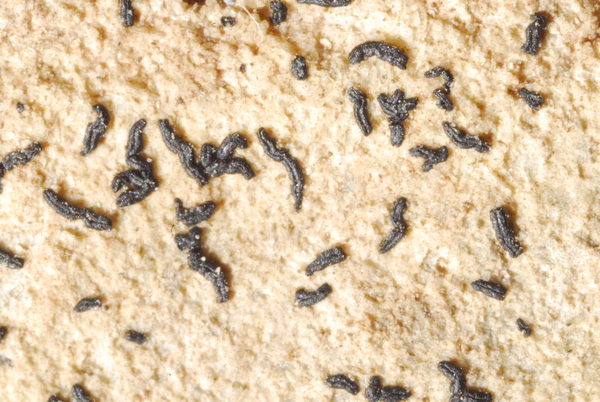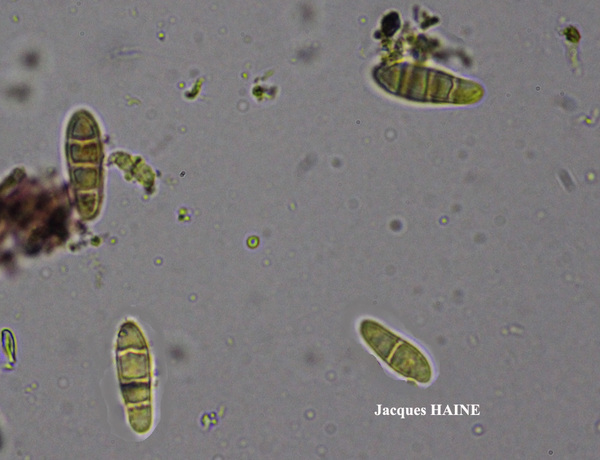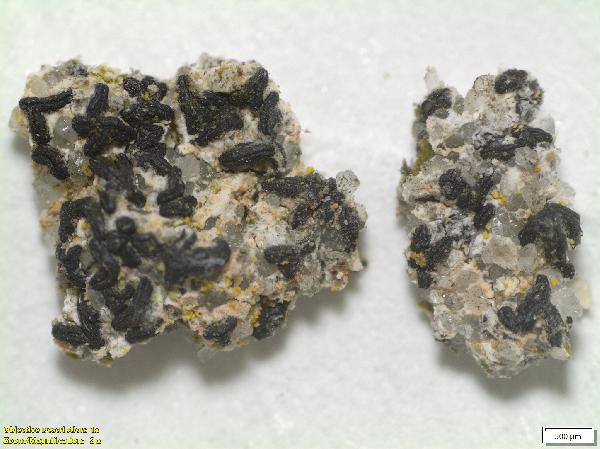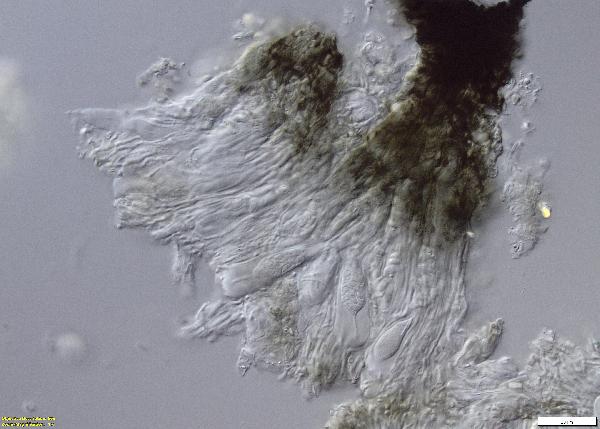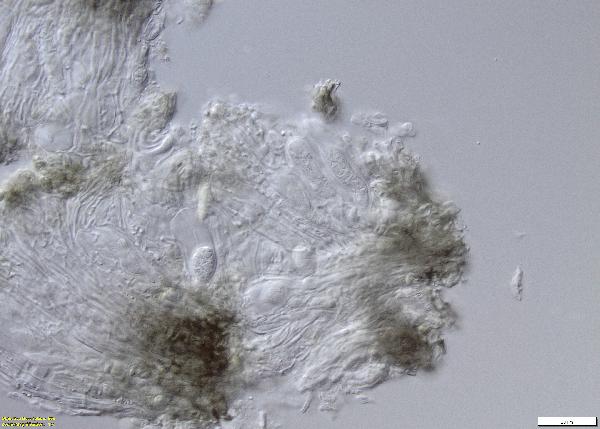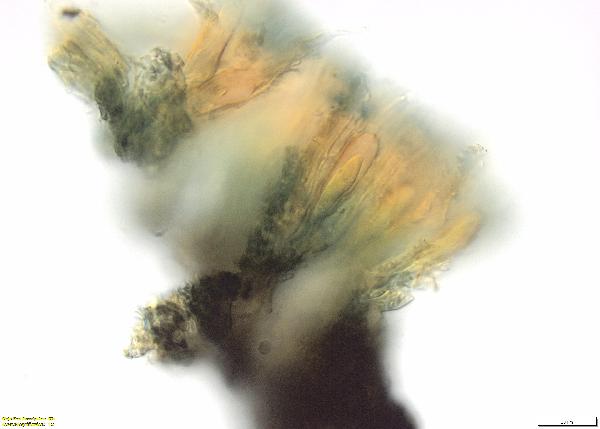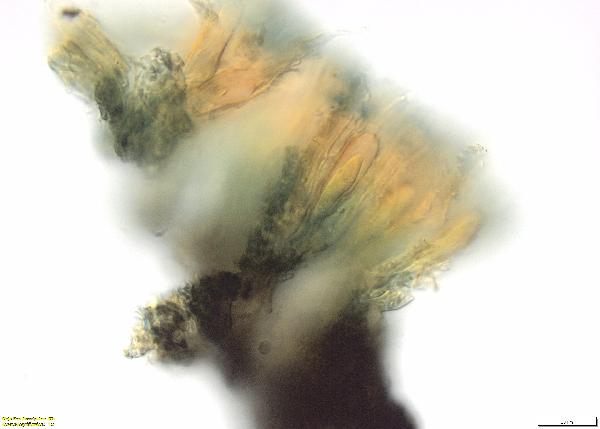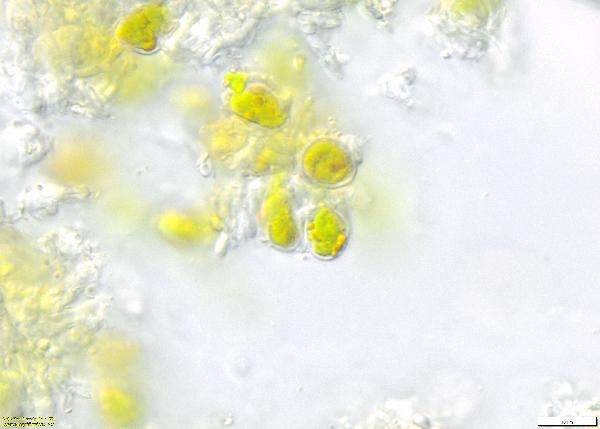Arthonia calcarea (Sm.) Ertz & Diederich
in Ertz & al., Mycol. Res., 113: 146, 2009. Basionym: Opegrapha calcarea Turner ex Sm. in Smith & Sowerby - Engl. Bot., 25: 1790, 1807.
Synonyms: Opegrapha chevallieri Leight.; Opegrapha conferta auct. p.p. non Anzi; Opegrapha confluens auct. non (Ach.) Stizenb.
Description: Thallus crustose, endosubstratic to thinly episubstratic, continuous or finely cracked, whitish to pale grey, sometimes with a pink or ochraceous hue, usually not well-delimited, I+ blue. Apothecia lirelliform, black, epruinose, straight or curved, simple or rarely branched, (0.4-)0.8-1.5(-3) x 0.2-0.4 mm, isolated or more commonly forming star-like clusters, projecting from thallus, with a slit-like disc and a black, carbonaceous margin. Proper exciple black, closed below the hymenium, K+ greenish near the hymenium, the part below the hymenium column-like, usually taller than the upper part; epithecium brown, K+ olive-green; hymenium colourless, I+ blue throughout, K/I+ blue, 60-80(-100) µm high; paraphyses much branched, not capitate; hypothecium black. Asci 8-spored, broadly clavate to subglobose, semifissitunicate, Arthonia-type. Ascospores 3-septate with rounded ends, hyaline, clavate, (11-)14-20(-24) x (3-)4-5(-6) μm, with a thin, usually poorly visible perispore. Pycnidia black, semi-immersed. Conidia straight, 5-8 x c. 1 µm. Photobiont trentepohlioid. Spot tests: thallus K-, C-, KC-, P-, UV-. Chemistry: without lichen substances.
Growth form: Crustose
Substrata: rocks
Photobiont: Trentepohlia
Reproductive strategy: mainly sexual
Commonnes-rarity: (info)
Alpine belt: absent
Subalpine belt: extremely rare
Montane belt: rather common
Dry submediterranean belt: common
Humid submediterranean belt: very common
Padanian area: extremely rare
pH of the substrata:
1 2 3 4 5
Solar irradiation:
1 2 3 4 5
Aridity:
1 2 3 4 5
Eutrophication:
1 2 3 4 5
Poleotolerance:
0 1 2 3
Altitudinal distribution:
1 2 3 4 5 6
Rarity
absent
extremely rare
very rare
rare
rather rare
rather common
common
very common
extremely common
Loading data...
Occurrence data
Predictive map
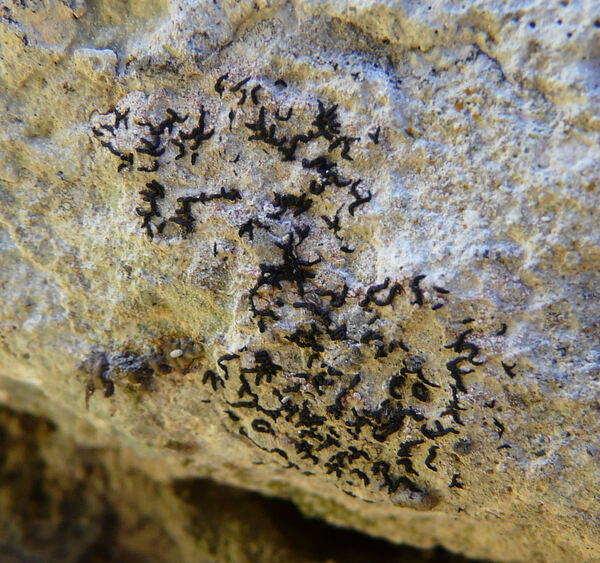
A. Moro; Owner: Department of Life Sciences, University of Trieste
Sicilia, TP, Erice, dintorni della città
2008.04.05
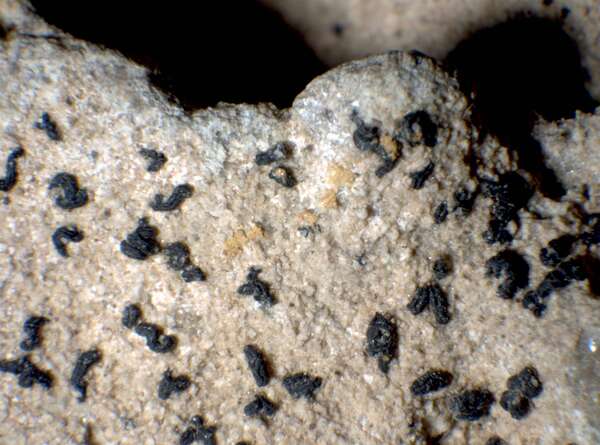
P.L. Nimis; Owner: Department of Life Sciences, University of Trieste
Herbarium: TSB (13485)
2001/11/27
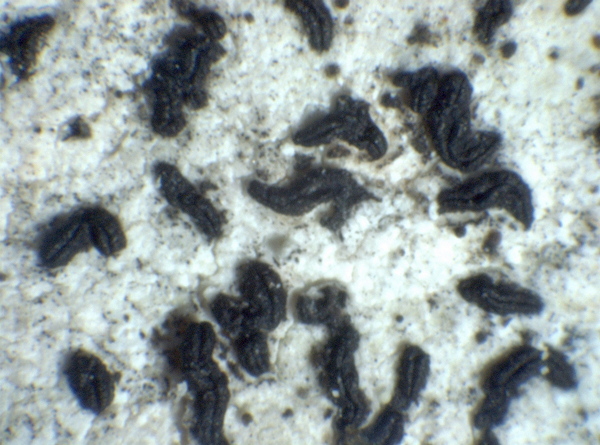
P.L.Nimis; Owner: Department of Life Sciences, University of Trieste
Herbarium: TSB (38281)
2008.02.23
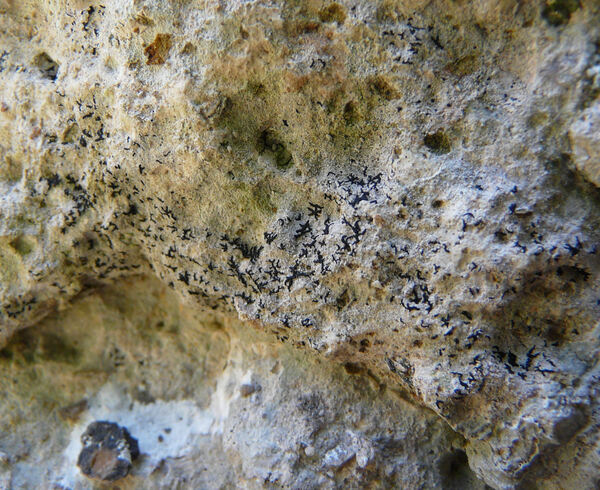
A. Moro; Owner: Department of Life Sciences, University of Trieste
Sicilia, TP, Erice, dintorni della città
2008.04.05
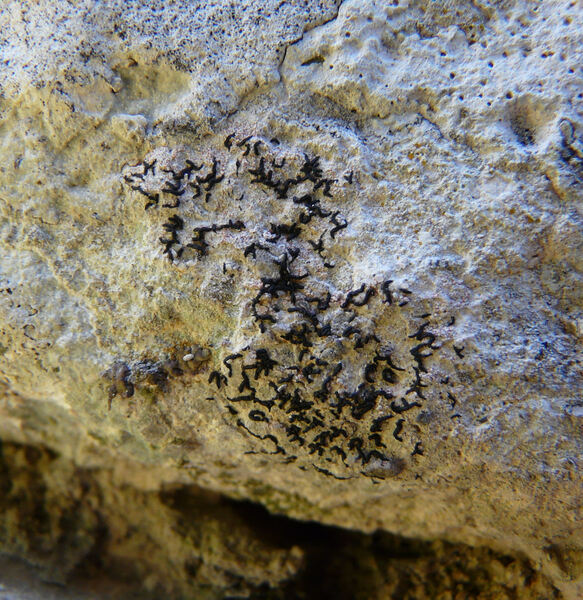
A. Moro; Owner: Department of Life Sciences, University of Trieste
Sicilia, TP, Erice, dintorni della città
2008.04.05
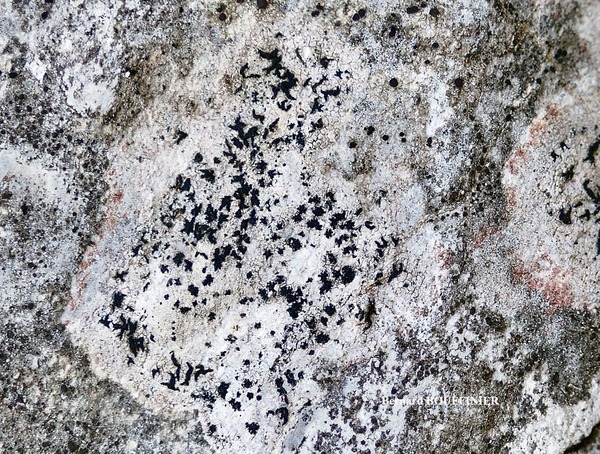
Bernard Bouffinier - Source: http://www.lichensmaritimes.org/index.php?task=fiche&lichen=84&lang=en
France, Corse, Barbagio
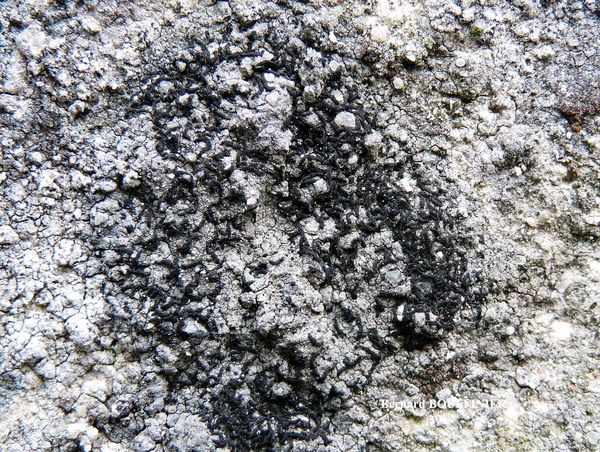
Bernard Bouffinier - Source: http://www.lichensmaritimes.org/index.php?task=fiche&lichen=84&lang=en
France, Mur de Chapelle Camaret
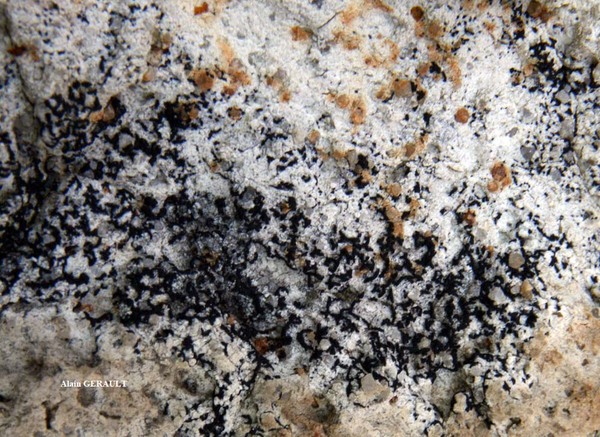
Bernard Bouffinier - Source: http://www.lichensmaritimes.org/index.php?task=fiche&lichen=84&lang=en
France, Plougastel-Daoulas
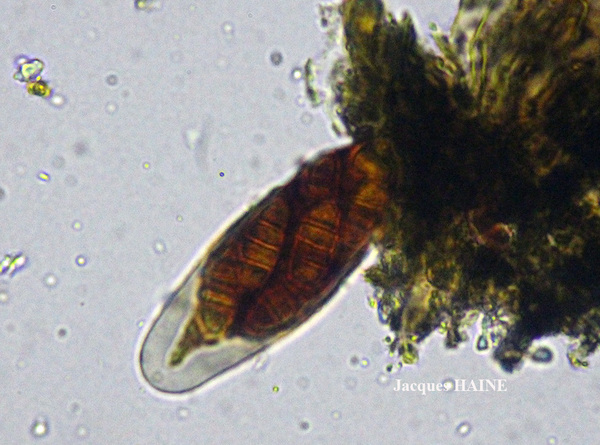
Jacques Haine - Source: http://www.lichensmaritimes.org/index.php?task=fiche&lichen=84&lang=en
France, Crozon
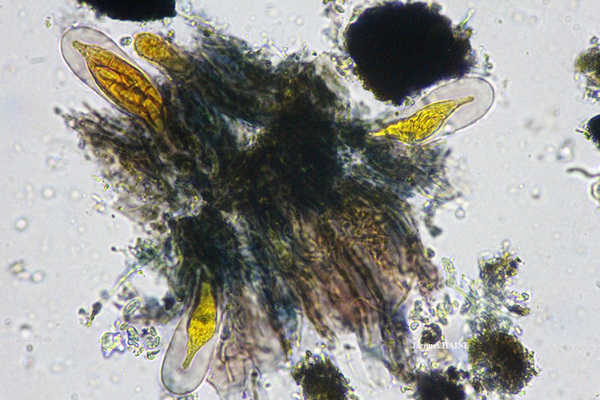
Jacques Haine - Source: http://www.lichensmaritimes.org/index.php?task=fiche&lichen=84&lang=en
France, Crozon
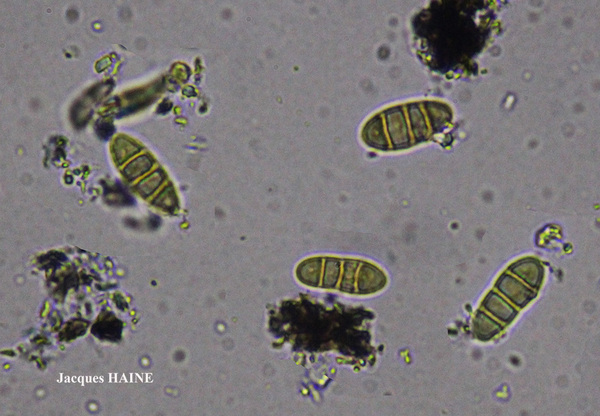
Jacques Haine - Source: http://www.lichensmaritimes.org/index.php?task=fiche&lichen=84&lang=en
France, Crozon

Jacques Haine - Source: http://www.lichensmaritimes.org/index.php?task=fiche&lichen=1053&lang=en
France, Roscanvel
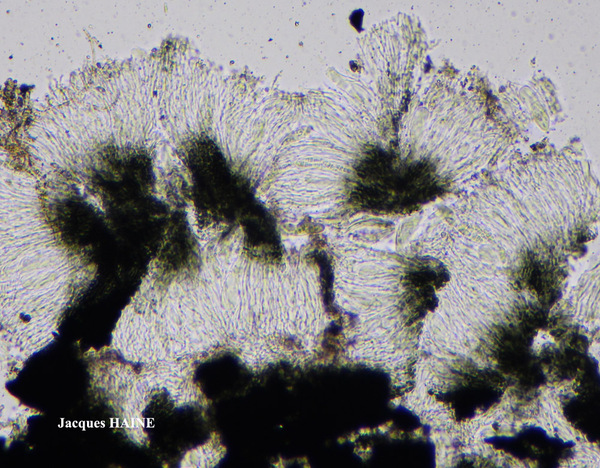
Jacques Haine - Source: http://www.lichensmaritimes.org/index.php?task=fiche&lichen=1053&lang=en
France, Roscanvel
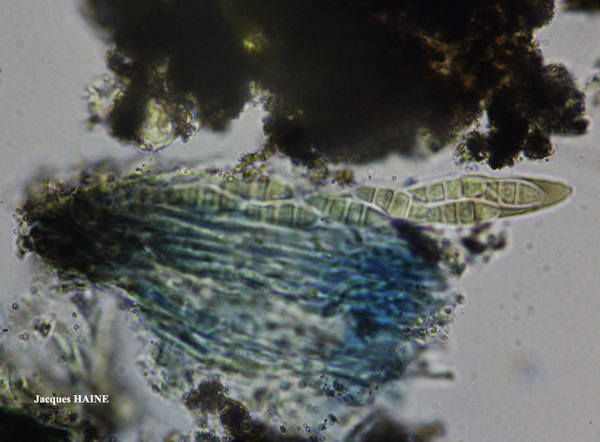
Jacques Haine - Source: http://www.lichensmaritimes.org/index.php?task=fiche&lichen=1053&lang=en
France, Roscanvel

Jacques Haine - Source: http://www.lichensmaritimes.org/index.php?task=fiche&lichen=1053&lang=en
France, Roscanvel
Growth form: Crustose
Substrata: rocks
Photobiont: Trentepohlia
Reproductive strategy: mainly sexual
Commonnes-rarity: (info)
Alpine belt: absent
Subalpine belt: extremely rare
Montane belt: rather common
Dry submediterranean belt: common
Humid submediterranean belt: very common
Padanian area: extremely rare
pH of the substrata:
| 1 | 2 | 3 | 4 | 5 |
Solar irradiation:
| 1 | 2 | 3 | 4 | 5 |
Aridity:
| 1 | 2 | 3 | 4 | 5 |
Eutrophication:
| 1 | 2 | 3 | 4 | 5 |
Poleotolerance:
| 0 | 1 | 2 | 3 |
Altitudinal distribution:
| 1 | 2 | 3 | 4 | 5 | 6 |
Rarity
absent
extremely rare
very rare
rare
rather rare
rather common
common
very common
extremely common
Loading data...
Occurrence data
Predictive map

A. Moro; Owner: Department of Life Sciences, University of Trieste
Sicilia, TP, Erice, dintorni della città
2008.04.05

P.L. Nimis; Owner: Department of Life Sciences, University of Trieste
Herbarium: TSB (13485)
2001/11/27

P.L.Nimis; Owner: Department of Life Sciences, University of Trieste
Herbarium: TSB (38281)
2008.02.23

A. Moro; Owner: Department of Life Sciences, University of Trieste
Sicilia, TP, Erice, dintorni della città
2008.04.05

A. Moro; Owner: Department of Life Sciences, University of Trieste
Sicilia, TP, Erice, dintorni della città
2008.04.05

Bernard Bouffinier - Source: http://www.lichensmaritimes.org/index.php?task=fiche&lichen=84&lang=en
France, Corse, Barbagio

Bernard Bouffinier - Source: http://www.lichensmaritimes.org/index.php?task=fiche&lichen=84&lang=en
France, Mur de Chapelle Camaret

Bernard Bouffinier - Source: http://www.lichensmaritimes.org/index.php?task=fiche&lichen=84&lang=en
France, Plougastel-Daoulas

Jacques Haine - Source: http://www.lichensmaritimes.org/index.php?task=fiche&lichen=84&lang=en
France, Crozon

Jacques Haine - Source: http://www.lichensmaritimes.org/index.php?task=fiche&lichen=84&lang=en
France, Crozon

Jacques Haine - Source: http://www.lichensmaritimes.org/index.php?task=fiche&lichen=84&lang=en
France, Crozon

Jacques Haine - Source: http://www.lichensmaritimes.org/index.php?task=fiche&lichen=1053&lang=en
France, Roscanvel

Jacques Haine - Source: http://www.lichensmaritimes.org/index.php?task=fiche&lichen=1053&lang=en
France, Roscanvel

Jacques Haine - Source: http://www.lichensmaritimes.org/index.php?task=fiche&lichen=1053&lang=en
France, Roscanvel




